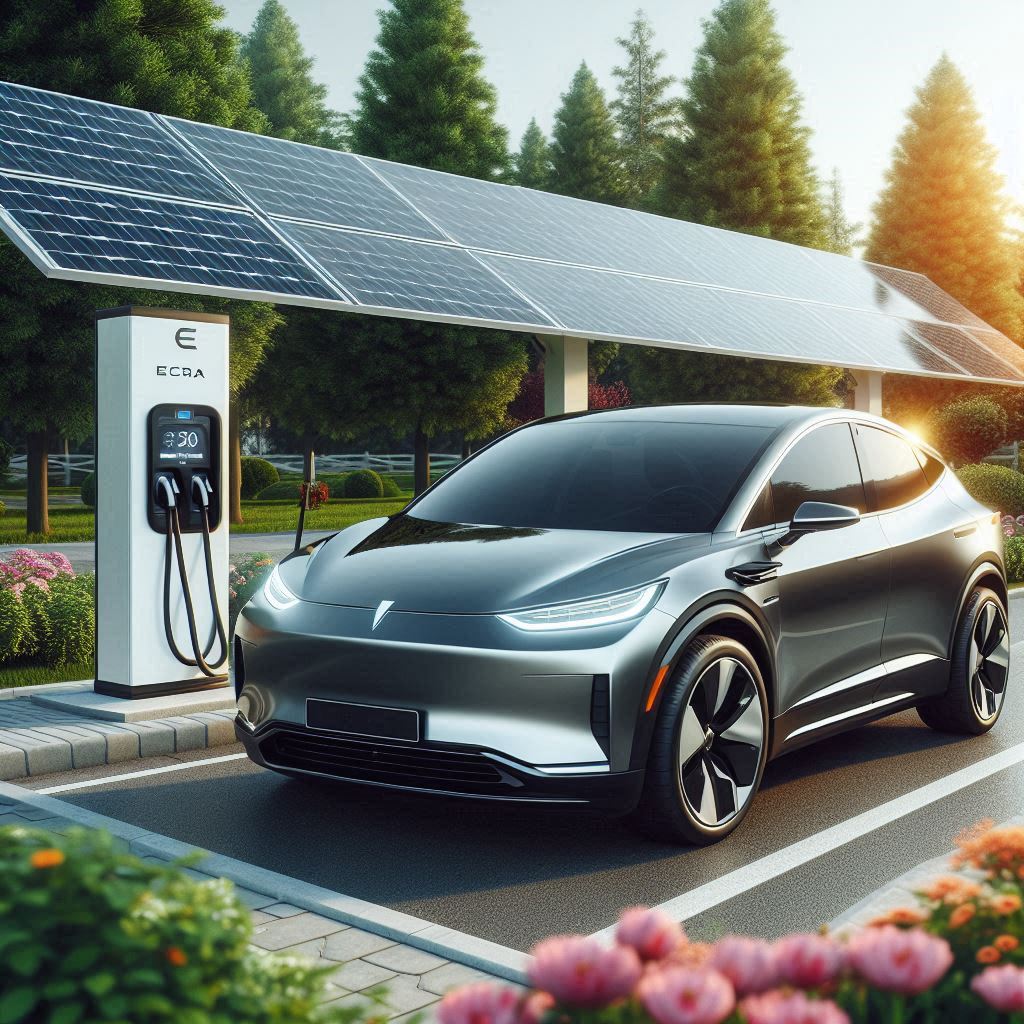The EV Myth: EV Fires
EV fires are common. EVs catch fire all the time. Fires in electric cars are far more common than petrol cars.
Updated and expanded: 2nd August 2024


The EV Myth Busted: EV Fires
There have been very few EV fires compared to petrol vehicles.
Petrol cars catch fire at a rate of 0.1% or 1 in 1,000
Electric cars catch fire at a rate of 0.0012% or 1 in 83,333
This means an EV is far less likely to catch fire compared to a petrol vehicle. Source: Drive Magazine
It’s true that an EV fire is more difficult to extinguish if the battery becomes involved, but the chance of actually catching fire in the first place is much lower.
Update: EV Firesafe June 2024 Data Update
Details: Busting the myth that electric vehicles regularly catch fire
Common Misconceptions About EVs
One common myth is that EVs are not safe or prone to catching fire, which isn’t entirely accurate.
Vehicles powered by electricity have undergone rigorous safety testing and are subject to stringent industry regulations. In fact, studies indicate that EVs are not just safe, but considerably safer, than traditional fuel cars. There is plenty of credible data to counter the sensational click-bait headlines when forming opinions about the safety of electric vehicles. We’ve done some of the research here, so you don’t have to.
The Reality of Fires in Electric Vehicles
Understanding the actual statistics and causes of vehicle fires can help clear the air surrounding this issue.
Statistics on EV Fires vs. Conventional Vehicle Fires
Data shows electric vehicle fires are statistically rare compared to traditional vehicle fires. Several recent studies indicate that the likelihood of an electric vehicle catching fire is significantly lower than that of petrol-powered vehicles, despite media portrayals suggesting otherwise. Studies sponsored by independent authorities without a bias, such as the Australian Defence Force, have indicated petrol behicles are over 80 times more likely to catch fire.
Causes of Fires in Electric Vehicles
Conventional vehicle fires primarily result from fuel leaks, accidents, or electrical system failures. The fuel leak part of the equation is removed entirely with an EV.
Several factors can contribute to fires in electric vehicles, frequently involving battery malfunctions or thermal runaway events. Although such occurrences are infrequent, they are often attributed to manufacturing defects, improper modifications, or accidents that compromise the battery integrity. It’s important to remain vigilant about the maintenance and care of your electric vehicle to mitigate any potential risks.
Comparing Fire Risks: EVs vs. Internal Combustion Engine Vehicles
Fires in vehicles are a concern shared by both electric and traditional car owners. Below is a comparative look at the fire risks associated with both types:
| Aspect | Risk Level |
|---|---|
| Incidence of Fires | Lower in EVs |
| Causes | Battery issues vs. fuel leaks. |
| Post-Accident Fires | Lower rate in EVs |
| Percentage of Fires | 80+ times higher in traditional vehicles |
Fires in electric vehicles are less common compared to internal combustion engine vehicles, owing to the different underlying causes. While both types can experience fire hazards, understanding the relevant statistics and the primary causes can help you appreciate the relative safety of EVs in this regard.
Safety Features of Electric Vehicles
Advanced safety features integrated into electric vehicles help mitigate the risk of fires and ensure your safety on the road.
Battery Safety Design and Engineering
To enhance safety, electric vehicles are engineered with robust battery designs that include multiple layers of insulation and protective casings. These designs minimize the risk of short-circuiting and overheating, which can lead to fires. Manufacturers rigorously test batteries to withstand various conditions, ensuring high reliability and safety standards.
Charging
Many people believe charging is a cause for fires. Advanced battery management systems communicate with the charger to regulate current flow. This allows the car to speed up or slow down charging, depending on battery temperature and other factors to make the process both safe and efficient. Software updates allow manufacturers to further improve the charging experience as technology and knowledge advance at a rapid pace.
Thermal Management Systems
All electric vehicles incorporates advanced thermal management systems designed to regulate battery temperatures. These systems prevent overheating during both charging and discharging cycles, helping to maintain your battery’s efficiency and lifespan.
Design plays a crucial role in the thermal management of EV batteries. These systems typically consist of cooling plates, fans, and liquid cooling solutions that work together to disperse heat and stabilize the battery’s temperature. By effectively maintaining optimal operating temperatures, these systems significantly reduce the risk of thermal runaway and enhance overall vehicle safety.
Crash Safety Ratings for Electric Vehicles
The structural integrity of EVs, combined with advanced crumple zones and reinforced battery enclosures, can greatly minimize injuries in the event of an accident.
Safety agencies conduct comprehensive tests focused on electric vehicle batteries during crash evaluations. This includes assessing the potential for fires and explosions after impact. Because of stringent safety regulations and effective engineering practices, many electric vehicles achieve high safety ratings, reassuring you that these vehicles are equipped to protect you and your passengers in case of a collision.
The Role of Media in Shaping Perceptions
For many consumers, the portrayal of electric vehicles (EVs) in the media significantly influences their perceptions and decisions. The rise of sensational reporting on rare fire incidents involving EVs can skew public understanding and create unnecessary fears. As you dig deeper into the role of media, it is imperative to differentiate between factual reporting and sensationalism. Boring accurate stories unfortunately don’t get ratings like wildly innacurate sensationalism.
Politics can often cloud people’s judgement. Conservative governments and voters tend to be less enthusiastic, or even hostile towards EVs and renewable energy. Conservative edia outlets are more likely to run negative stories about EVs. This isn’t strictly adhered to, but it’s important to watch for political bias in media reports.
This episode of Media Watch shows how anti-EV sentiment has taken off not just in convervative outlets, but has spilled over into mainstream media.
Analyzing Viral Incidents of EV Fires
Incidents of electric vehicle fires, when amplified by social media and traditional news outlets, often gain viral attention. This rapid dissemination can obscure the fact that the overall incidence of EV fires is significantly lower than those involving petrol vehicles. A single EV fire is considered news, while possibly dozens of ICE vehicle fires might barely make the traffic report. In a few cases, it doesn’t even need to be an EV. The Luton airport carpark fire is still widely, but wrongly, believed to have involved an EV, even though it’s been conclusively proven to have started in a diesel vehicle.
There are more than 40 million EVs on the road globally, and EV Firesafe have only been able to confirm 511 EV fires since 2010. There was a spike in 2022, due to a manufacturing fault, which was resolved by recalling and repairing the majority of those vehicles. This manufacturing fault wasn’t restricted to EVs, and has been resolved across multiple industries, including solar storage.
The poor regulation of e-bikes and poor (cheap) manufacturing have contributed to public perception of lithium batteries in general. This can have a negative impact on EV perception. It should be noted that e-bikes are not governed by any meaningful safety standards and cheap unsafe models have flooded the market.
Regulatory Standards and Testing
Despite popular belief, the safety of electric vehicles is rigorously regulated and tested to minimise the risk of fire incidents. Understanding these regulatory standards is critical in dispelling myths surrounding EV safety.
Overview of Safety Standards for Electric Vehicles
Electric vehicles are governed by stringent safety standards that focus on battery management, electrical components, and overall vehicle structure. Agencies such as the US National Highway Traffic Safety Administration (NHTSA) set these crucial safety benchmarks to ensure the protection of you and your passengers. ANCAP safety standards are applied in Australia and New Zealand.
Industry bodies and driver associations also play a significant role in ensuring safety standards are maintained. Poor press can significantly impact a manufacturer’s safety record, leading to reduced sales. Market forces are a significant driver for manufacturers to get this right. Insurance companies and underwriters are also influential in ensuring standards are met.
The Future of Electric Vehicle Safety
To ensure that electric vehicles remain a safe and reliable choice for consumers, ongoing advancements in technology and research are critical. As you think about the future of EVs, understanding these innovations and trends can help you make informed decisions while dispelling myths surrounding their safety.
Innovations in Battery Technology
One significant aspect of electric vehicle safety lies in advancements in battery technology. Manufacturers are developing new battery chemistries that enhance thermal stability and minimize flammability. By incorporating materials that are less prone to catching fire, you can have increased confidence in the overall safety of your electric vehicle.
Innovations in this research trend involve rigorous testing protocols that focus on understanding the root causes of battery fires and other hazards. As these studies advance, you can expect stricter safety regulations and design guidelines that help mitigate risks. This commitment to safety further reinforces the notion that electric vehicles are a viable alternative to traditional combustion engine vehicles.
Predictions for the Next Decade
For the upcoming decade, you can anticipate groundbreaking improvements in EV safety features and battery technologies. As public demand for electric vehicles grows, manufacturers will, either by choice or regulation, implement cutting-edge safety measures that will enhance your driving experience and peace of mind.
With advancements in artificial intelligence and machine learning, future electric vehicles will likely come equipped with sophisticated safety systems that predict and prevent accidents. This perceptive technology, combined with improved battery designs, will significantly reduce the likelihood of fires and other risks associated with electric vehicles. As a result, you can confidently embrace the shift toward electric mobility, knowing that safety is at the forefront of innovations in the industry.
To Wrap Up
As a reminder, the myth that electric vehicles are prone to catching fire is largely unfounded. Data shows that EVs are statistically safer than petrol-powered cars in this regard, with their battery management systems designed to mitigate fire risks. By understanding the facts and recognizing the rigorous safety measures in place, you can feel more confident in your decision to consider or use an electric vehicle. Not only are EVs advancing technology, but they also prioritise your safety on the road.



